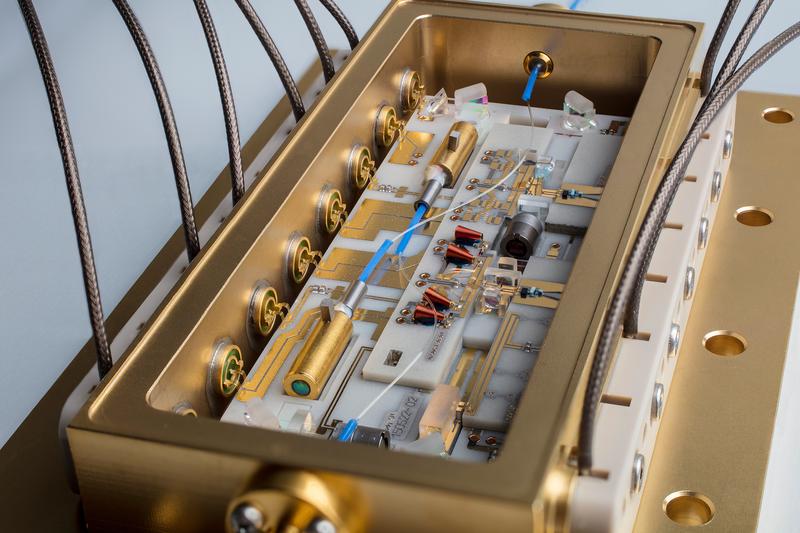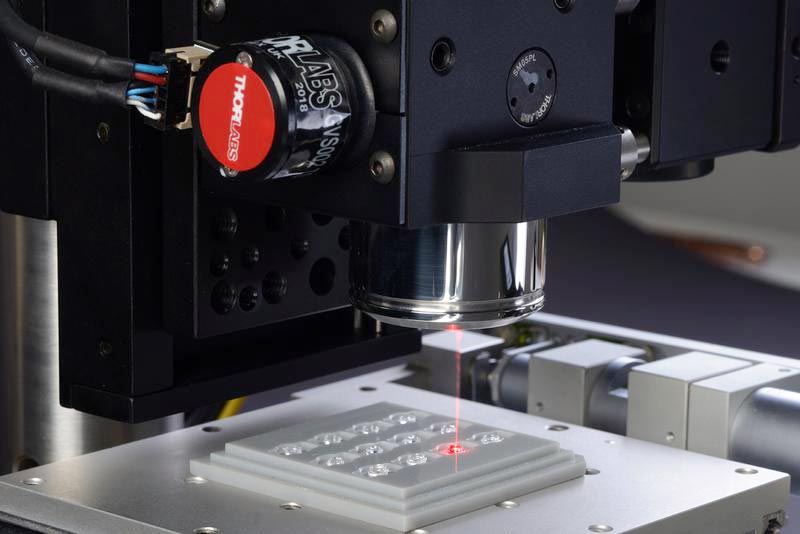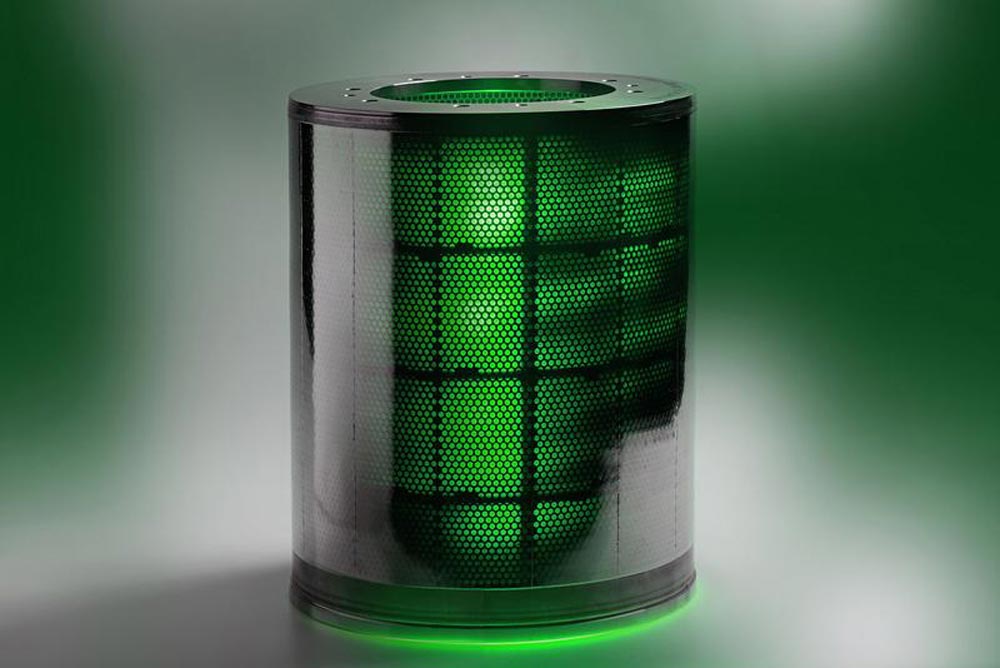

Circulating measuring spot for inline measurements of LMD track heights.
© Fraunhofer ILT, Aachen, Germany
Fraunhofer ILT has been developing optical sensor technology specifically for production measurement technology for around 10 years. In particular, its »bd-1« sensor technology has already proven itself, for example, in the measurement of metal strip thicknesses.
Since the process operates bidirectionally, the laser measuring radiation takes the same path back and forth. Transmitter and receiver do not have to be aligned with each other; therefore, the measuring radiation can also be guided via scanner mirrors or other deflection devices. For this reason, the »bd-1« measurement technology can be combined very well with laser beams used for laser deposition, for example.
»bd-1« sensor technology compensates for process fluctuations
These characteristics argued in favor of using bidirectional sensor technology for additive manufacturing processes as well: For example, track height and layer thickness in Laser Material Deposition depend on many factors. Despite all efforts to keep the process parameters constant, there are always fluctuations – for example in the material feed and the traversing speed at reversal points.
The consequences are fluctuating layer thicknesses and geometric deviations. Since the material feed, for example, cannot be stabilized at will, the application quality depends on the continuous inline monitoring of the coating thickness.
This monitoring makes it possible to react quickly to fluctuations in track heights and layers. Bidirectional inline measurement can be used for quality assurance and process control, especially for Laser Material Deposition of larger components.
Easy installation in commercial laser optics
The measurement technology was initially combined with an in-house optical system. In Munich, Fraunhofer ILT will now be showing how well the »bd-1« sensor technology runs with standard commercial optics of a major German laser manufacturer.
Such solutions can be implemented without great effort, because – thanks to the compact design of the »bd-1« measuring heads – they can be easily integrated into existing optics. In order to measure applied track heights independently of direction, the measuring radiation is coupled coaxially to the processing radiation and deflected around the application point via mirrors.
Fraunhofer ILT at LASER World of PHOTONICS
Users can apply the »bd-1« sensor technology for powder- and coaxial wire-based LMD processes for quality assurance and for setting up real-time control of manufacturing processes.
The sensors are also suitable for monitoring and controlling other applications such as laser drilling and laser microstructuring. Interested parties can find out more in a discussion with experts from Fraunhofer ILT at the joint Fraunhofer booth 431 in Hall A2 from June 24 to 27, 2019.
Dr. Stefan Hölters
Production Measurement Technology
Telephone +49 241 8906-436
stefan.hoelters @ilt.fraunhofer.de
Prof. Dr. Reinhard Noll
Head of the Competence Area Measurement Technology and EUV Sources
Telephone +49 241 8906-138
reinhard.noll@ilt.fraunhofer.de
https://www.ilt.fraunhofer.de/en.html












